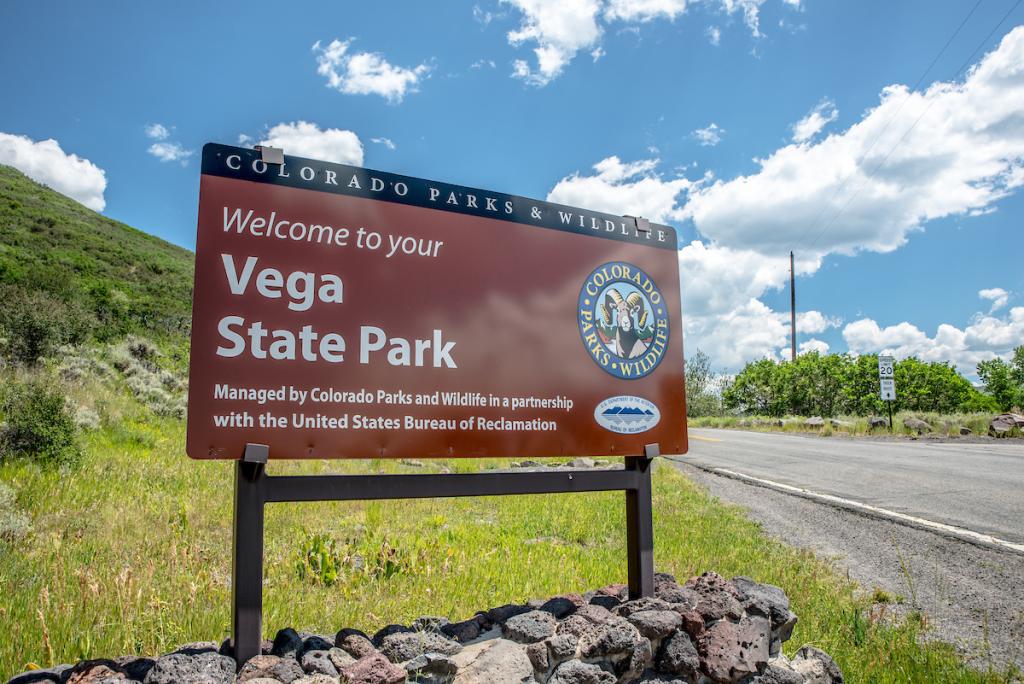CPW Cautions visitors of potential toxic blue-green algae in Vega Reservoir

 Rachael Gonzales
Rachael GonzalesNorthwest Region Public Information Officer
970-773-8587 / [email protected]
Twitter: @CPW_NW CPW Cautions visitors of potential toxic blue-green algae in Vega Reservoir

COLLBRAN, Colo. – People and their pets are cautioned to avoid contact with water at Vega Reservoir at Vega State Park due to a blue-green algae bloom discovered along the shore line during routine water inspections.
Samples of blooms will be tested for the presence of increased levels of toxicity.
“Algae blooms are common at Vega State Park,” said James Masek, Vega State Park Manager. We typically see these types of blooms when temperatures rise, usually later in the summer.”
Visitors planning to recreate on Vega Reservoir are advised to follow the instructions on all CPW yellow cautionary signs posted at the lake about blue-green algae. Park staff will closely monitor the alga bloom while waiting for testing results. At that time, CPW will determine if any other action is required as well as to decide when it is safe to remove the caution signs.
“Fishing is still allowed, but be careful to avoid the water, especially areas with visible algae.” said Masek.
At this time park staff are encouraging visitors to avoid any activities in the water where algae is visible. Be especially mindful when walking pets near the reservoir, as blue-green algae can be toxic to pets. Keep your dog leashed around the water. Do not let them drink the water or lick/ingest dried scum along the shoreline. If accidental exposure does occur, do not let your pet lick their fur or paws. Rinse them thoroughly with potable water and wear gloves for your own protection if possible.
Algae are an important part of aquatic food webs, but some types of blue-green algae are capable of producing toxins that may cause negative health impacts for humans and pets at elevated concentrations. The algae conditions will continue to change, and there may be no toxins or they may become toxic in the next few days. The public can help reduce the occurrence of blue-green algae blooms by preventing nutrients (nitrogen and phosphorus) from entering waterways, such as picking up pet waste.
Contact medical care (doctor or veterinarian) if, after exposure to the water, individuals or pets exhibit nausea, vomiting, digestive distress, breathing problems, seizure or unexplained illness.
To learn more about blue-green algae, visit CDPHE’s website.

 Photo Details:
Photo Details:Image 1: Blue-green algae found at Vega Reservoir at Vega State Park.
Image 2: Yellow warning signs posted around Vega Reservoir.
Colorado Parks and Wildlife (CPW) is an enterprise agency, relying primarily on license sales, state parks fees and registration fees to support its operations, including: 43 state parks and more than 350 wildlife areas covering approximately 900,000 acres, management of fishing and hunting, wildlife watching, camping, motorized and non-motorized trails, boating and outdoor education. CPW's work contributes approximately $6 billion in total economic impact annually throughout Colorado.
DISCLAIMER: The Colorado Parks and Wildlife (CPW) website maintains press releases containing historical information that may no longer be accurate. Press releases are dated, which should be noted to determine whether the information provided is current. Please review our current regulations and brochures for up-to-date information.